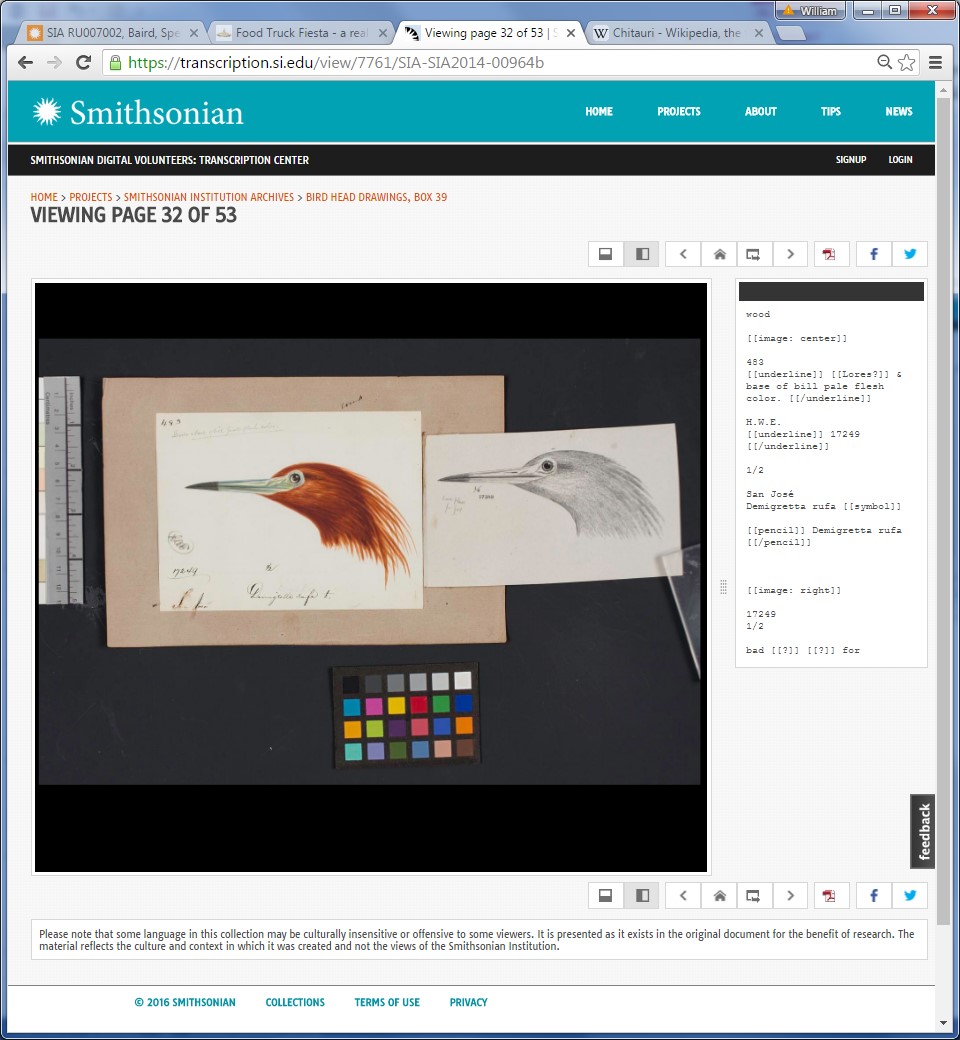
The Archives was recently gifted an 1860 letter from Spencer F. Baird, second Secretary of the Smithsonian, to George N. Lawrence, fellow naturalist. The donor requested that, along with a digital version, a transcription be provided, which I undertook alongside a simple treatment.
The letter was in overall excellent condition: the thin paper exhibited only a pair of small tears. These were mended from the reverse with heat-set tissue, prepared from Berlin tissue and Avanse MV-100 acrylic adhesive. The thinness of the tissue allowed for nearly invisible mends, which was especially desirable with such a thin, translucent paper.

I turned next to transcribing the letter. Unfortunately, due to the volume of Baird’s correspondence his letters—including this one—were often written in a hurried fashion, making them mildly illegible to modern readers. The immediately obvious presence of scientific names for the various animals discussed made this doubly challenging. With a bit of legwork, assistance from my Institutional History colleagues, and the help of several online resources (including the Cornell Lab of Ornithology website), I determined that the letter between Baird and Lawrence details various ornithological specimens being passed back and forth between the two colleagues, several of which appear to have been collected on an expedition to Cabo San Lucas in Baja California, Mexico.
One particular name proved simple to read and transcribe but difficult to verify—Demigretta rufa. Try as I might, I couldn’t find this species in modern resources. In the end I simply Googled the name as a last resort, and to my surprise a result appeared from the Smithsonian Transcription Center. The project in question was a set of bird head drawings from the personal papers of Smithsonian ornithologist Robert Ridgway. Within these drawings was the scientific name I’d had no luck finding elsewhere, and the image it was linked to helped me correctly connect the obsolete name with the modern Egretta rufescens, the reddish egret.

This was a fascinating opportunity to explore a side of the work of the Archives that I normally don’t see. It provided a chance to see the work of digitization and transcription at a closer view, and to make use of the full breadth of resources that the Smithsonian has to offer.
Related Collections
Related Resources
- Volunteer to transcribe primary source documents on the Smithsonian Transcription Center!
Produced by the Smithsonian Institution Archives. For copyright questions, please see the Terms of Use.

Leave a Comment